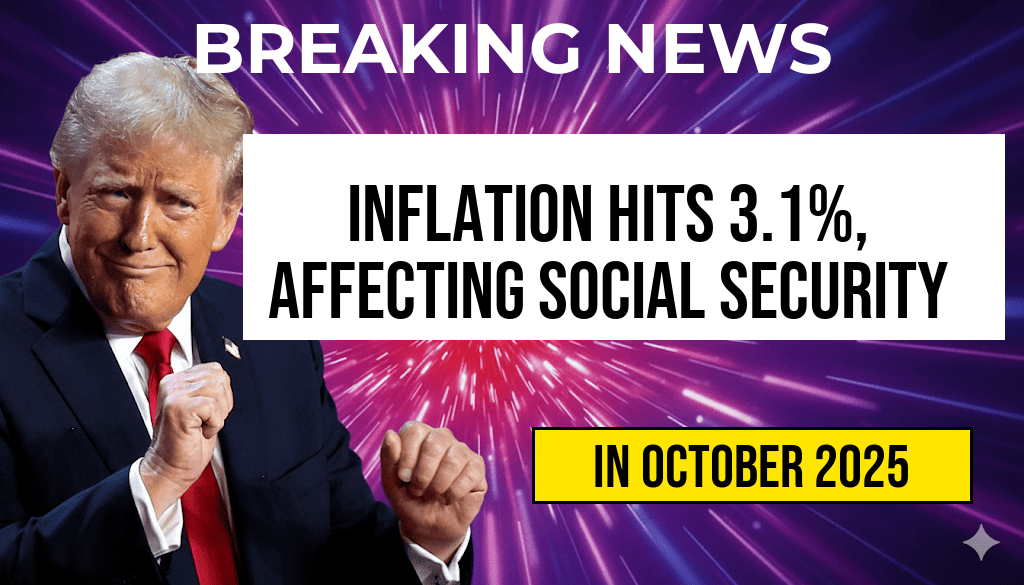The latest data from the U.S. Bureau of Labor Statistics reveals that the core Consumer Price Index (CPI) has surged to 3.1%, raising concerns among economists and everyday consumers alike. This increase is particularly alarming for retirees and those reliant on fixed incomes, as it effectively undermines the recent $49 increase in Social Security benefits announced earlier this year. The rise in core inflation, which excludes volatile items such as food and energy, signals persistent price pressures that could impact purchasing power and overall economic stability. This article delves into the implications of the latest inflation figures, the challenges faced by Social Security beneficiaries, and the potential economic landscape ahead.
Understanding Core CPI and Its Impact
The core CPI is a critical indicator used to gauge inflation by tracking the prices of goods and services, excluding food and energy costs. According to the Bureau of Labor Statistics, the core CPI has risen steadily, leading to 3.1% inflation for the 12 months ending in September 2023. This figure is concerning as it represents a significant increase from previous months, indicating that inflationary pressures are not easing as many had hoped.
What This Means for Social Security Beneficiaries
For those relying on Social Security benefits, the recent increase of $49, or approximately 3.2%, may feel inadequate in light of rising costs. With inflation outpacing this nominal increase, many retirees could find their purchasing power diminished. The Social Security Administration adjusts benefits based on inflation, but the reality is that increases often lag behind actual cost-of-living changes.
- Healthcare Costs: Many seniors face rising healthcare expenses that often exceed inflation rates.
- Housing and Utilities: Rent and utility costs have surged, further straining fixed incomes.
- Food Prices: Although food prices are excluded from core CPI, overall inflation affects grocery bills significantly.
The Broader Economic Implications
The surge in core CPI not only affects individuals but also poses broader economic challenges. As inflation rises, the Federal Reserve may need to consider tightening monetary policy, which could lead to increased interest rates. Higher rates can slow economic growth, making borrowing more expensive for consumers and businesses.
Potential Measures by the Federal Reserve
In response to rising inflation, the Federal Reserve might implement several strategies, including:
- Interest Rate Hikes: Increasing the federal funds rate to curb spending and investment.
- Reducing Asset Purchases: Slowing down the purchase of government securities to decrease liquidity in the market.
- Monitoring Economic Indicators: Keeping a close eye on job growth and wage increases to ensure a balanced approach.
Advice for Consumers and Retirees
For those affected by rising inflation, especially retirees, there are several strategies to navigate these challenging economic waters:
- Budgeting Wisely: Adjusting monthly budgets to prioritize essential expenses can help manage tight finances.
- Exploring Additional Income Streams: Part-time work or freelance opportunities may supplement fixed incomes.
- Staying Informed: Keeping abreast of economic trends can help consumers make informed financial decisions.
Looking Ahead
The current economic landscape presents significant challenges for many Americans, particularly for those relying on fixed incomes. As inflation continues to rise, the implications for Social Security benefits and overall economic stability remain uncertain. The Federal Reserve’s actions in the coming months will be crucial in determining whether inflation can be contained and how it will affect consumers moving forward.
For more information on inflation trends and economic indicators, visit Forbes or the Wikipedia page on Consumer Price Index.
Frequently Asked Questions
What is the current inflation rate according to the article?
The article states that the current inflation rate has soared to 3.1%, primarily affecting the Core CPI.
How does the rise in inflation impact Social Security benefits?
The increase in inflation undermines the effectiveness of the recent $49 Social Security increase, as rising prices diminish the purchasing power of these benefits.
What is Core CPI and why is it important?
Core CPI measures the changes in the price level of a basket of consumer goods and services, excluding food and energy. It is important because it provides a clearer picture of long-term inflation trends.
Will the $49 increase in Social Security be enough to keep up with inflation?
Given the current 3.1% inflation rate, the $49 increase may not be sufficient to fully offset the rising costs of living, leading to concerns among beneficiaries.
What can Social Security recipients do in response to rising inflation?
Social Security recipients can consider budgeting more carefully, exploring additional income sources, or advocating for adjustments in benefits to better keep pace with inflation.











